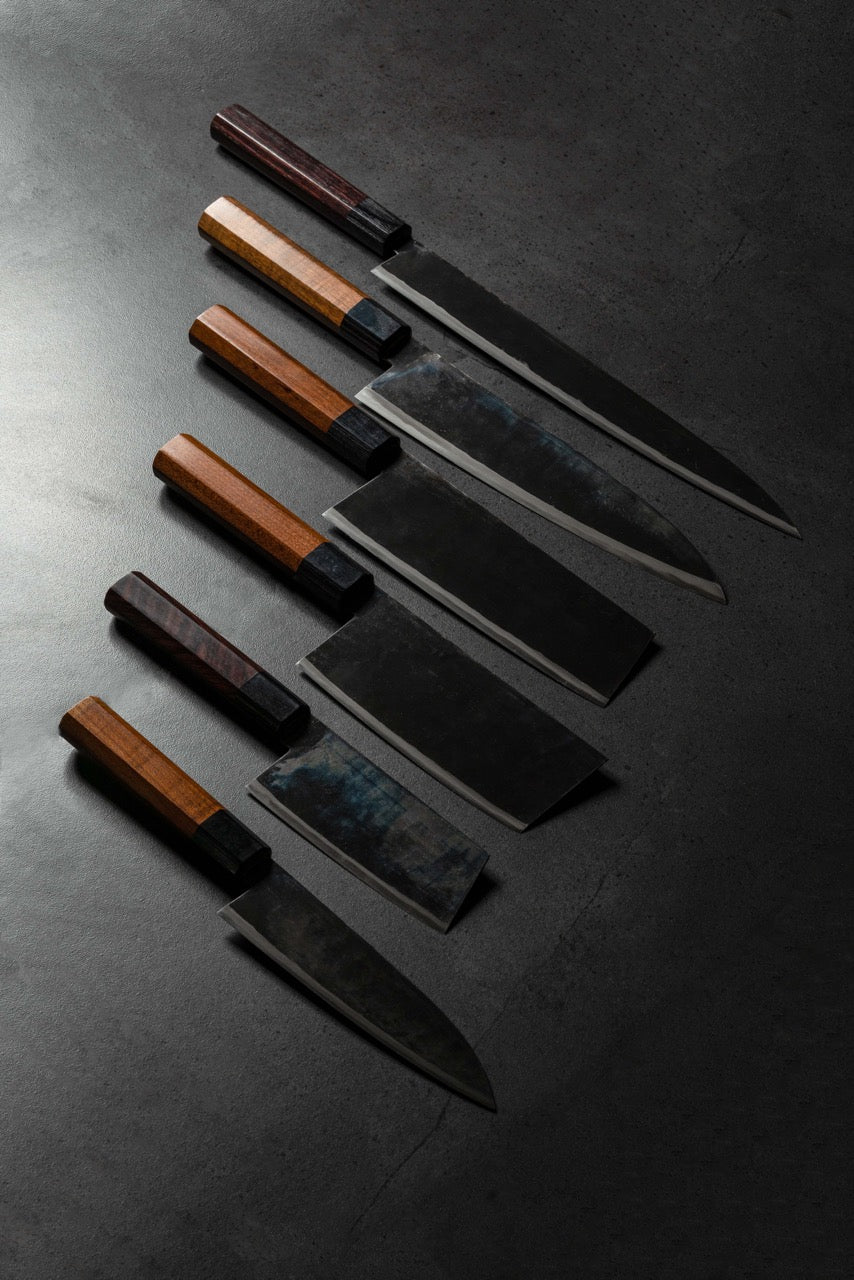
Yoshikane SKD Nashiji Sujihiki 240mm Tagayasan
Description
Sujihiki translates as "flesh slicer", which describes its role well. Typically 240 mm to 300 mm long and 34 mm to 40 mm high, the sujihiki blade is perfect for making long cutting movements from heel to toe. A lower blade height decreases friction when cutting and keeps the fibers of the protein you are cutting as intact as possible.
The Yoshikane forge was founded in 1919 in Sanjo, Niigata Prefecture. Today, Kazuomi Yamamoto-san of the 4th generation is in charge. He was trained by his uncle Tsuneo Yoshida (3rd generation) and is now established as one of the best blacksmiths in Japan, in addition to being recognized for his skills in blade sharpening. He would rival or surpass the best Sakai sharpeners. Many talented blacksmiths of Sanjo such as Nihei, Mazaki and Masashi, were trained at Yoshikane's forge. Yoshikane is also famous for his work of Shirogami #2, SKD and SLD.
"While many things change rapidly these days, there are ideas and beliefs that never change. Every day, I make sure that the meaning of these words is forged in the making of knife." - Kazuomi Yamamoto-san
SKD-12 steel is the Japanese equivalent of A2 steel and is a "high speed tool steel", this type of steel was popularized in the early 1900s. To obtain a high-speed tool steel, alloying elements such as chromium, tungsten, vanadium and molybdenum are combined with a high carbon steel. It can achieve very high hardness and outstanding wear resistance and is mainly used in factory tools for metal working. Yoshikane Forge was one of the first forges to incorporate this type of steel into the construction of Japanese knives and is now known for its SKD-12 and SLD (made from SKD-11 steel) blades. With a chromium content of about 5%, this steel is semi-oxidizable and requires minimal maintenance to avoid rusting.
Tips for best results
Make sure your knife will deliver its absolute best by having it professionally sharpened at least once a year. Please note that our meticulously handcrafted Japanese knives are – unless otherwise noted – carbon steel and not stainless steel. To prevent rust, make sure the blades are patted dry – especially when cutting acidic items. Never cut frozen foods, hard products, bone, or twist the blade when using. Never soak in water after use or put in the dishwasher. After use, store in a cool, dry place and avoid high temperature fluctuations.
Our commitment to you – our customers
Warranty
Every knife we carry has a lifetime warranty from manufacturing defects and errors. For example, if the handle becomes detached or cracks appear after a few weeks of proper use. Or if there are any blade cracks from the edge to the spine. While such defects are indeed rare, they can occur. In such cases, we will exchange the knife in question or give you a refund. Each warranty case is different depending on the criteria, and we reserve the right in each and every case to evaluate the applicability of our lifetime warranty in the event of any manufacturing defects and errors.
After-Sales service
Do you get the feeling that your knife just can’t “cut it”?
Each knife we carry is supplied with a so-called “factory edge”. Our chef knife range comprises more than 200 different products. While all our handcrafted Japanese knives ship with a “factory edge”, ultimate blade sharpness can vary. If you feel that your knife’s blade edge is not performing to its full potential, feel free to contact us and we will provide you with professional sharpening for free!
Oops! What about the truly Unthinkable?
Was it just through a slight slip of the hand that your knife accidentally fell on the floor and damaged its tip and blade, or it was used to cut a hard, frozen product and chipped? Don’t despair, get in touch with us and we will solve the problem through our in-house, professional sharpening and repair service.
Simply contact us or visit our store to get a free estimate.










